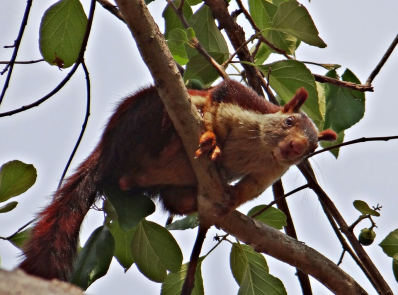Colons for lists: Indian giant squirrel
The Grammar Bit!
Read the three scintillating list sentences opposite. You’ll remember from Year 2 that commas are used to separate individual items and actions in a list (apart from between the final two items or actions when the coordinating conjunction ‘and’ is commonly used instead).
Now that you are in Year 6, we can get a little bit more ‘sophisticated’ with our list sentence writing. Notice how a colon (:) has been used to introduce each list of items or actions. When using a colon in this way, each introductory clause (bold) should be able to stand alone as a main clause.
If the introductory clause cannot stand alone, it would be incorrect to interrupt the flow of it with a colon.
Example
(Incorrect) The natural predators of Indian giant squirrels are: leopards, crested serpent eagles and lion-tailed macaques.
(Correct) The Indian giant squirrel has a number of natural predators: leopards, crested serpent eagles and lion-tailed macaques.
Notice also how the words that follow the colon in each list do not start with a capital letter (unless, of course, they are proper nouns).
Scintillating Sentences
1) Jackfruit have several unusual characteristics: their texture is similar to chicken or pork, they are the largest tree-borne fruits in the world and, when ripe and unopened, they have a very unpleasant smell.
2) There are four subspecies of giant squirrel that can be found in south and southeastern Asia: the Indian giant squirrel, the grizzled giant squirrel, the cream-coloured giant squirrel and the black giant squirrel.
3) The following foods feature heavily in an Indian giant squirrel’s diet: fruit, flowers, nuts and tree bark.

Did you know?
Fearful of predators on the ground, Indian giant squirrels prefer to stash uneaten nuts high up in the treetops rather than bury them underground.

